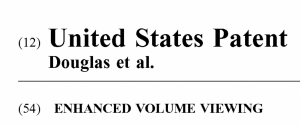
To utilize TPMI’s 3D hazard tracking system to achieve overmatch in Urban warfare
To utilize TPMI’s 3D hazard tracking system to achieve overmatch in Urban warfare
ORLANDO, FL, USA, July 24, 2023/EINPresswire.com/ — GPS satellites, which orbit at an altitude of 12,550 miles, are known to produce weak signals at the Earth’s surface, so signal is frequently lost inside buildings. On the 21 July press release, TPMI discussed its ‘731 patented system providing a battlefield pseudo GPS system coupled to an augmented reality (AR) headset with specialized receivers to pinpoint a Soldier’s position within an uncharted building.
An upgraded IVAS using TPMI’s system would solve a major problem a squad leader faces, which is “where are my 8 Soldiers in this 2 story building?” Soldiers could see on their upgraded IVAS blue outline over friendly forces, enabling precise, real-time, positional knowledge of each Soldier within the building. Accurate Soldier tracking will yield a more lethal force via a “coordinated strike” (near simultaneous strike by the entire squad) thereby achieving overmatch.
However, as the old saying goes, “keep your friends close, and your enemies closer.” What about your enemies’ positions? It is critical to know where your enemies are located, but how can you know their positions if they are not wearing IVAS units?
TPMI in US Patent 10,973,485 takes on this complex problem. The ‘485 patent couples pseudo GPS and sensor technology to enable object tracking on a first AR headset. The tracking technology determines the distance and relative orientation of an object in relation to the AR headset; thus, not only is the AR headset be plotted on the generated 3D map of the building, but the object is plotted too. Thus, even without line of sight, a second AR headset would be able to display the object imaged by the first AR headset. This is game-changing technology.
As the Soldiers maneuver through the uncharted building, each upgraded IVAS system could continuously gather data of its surroundings and objects could be uploaded into the precision 3D map. Uploading this massive data to a team of off-site imaging experts could yield extremely rapid analysis of all imaged contents within the uncharted building to classify objects into a set of hazards (e.g., enemy forces, weapons, bombs, etc.) yielding a major opportunity for increased survivability. All objects classified as hazards could be highlighted as red virtual objects with their positions and orientations plotted within the generated 3D map. Other objects such as doors could be plotted in green.
Consider a simple scenario. A Soldier turns a corner and has a near miss with a hidden booby trap. The Soldier’s IVAS system images the booby trap. The off-site imaging experts classify it as a hazard. And subsequent Soldiers can see on their IVAS a red virtual object indicating the hazard before they turn a corner.
Consider a more complex scenario. A Soldier has visual on an enemy moving to a different room, but does not have a shot. Current technology via a voice communication such as “enemy on the move” could provide some notice, but would fail in precision — and the listener is left with questions — From where? What direction is he going? How fast is he moving? What door did he go through? When did he leave?
Using TPMI’s technology, overmatch is achieved. Soldier #1’s IVAS system relays data to the out-side platoon or company command post where the imaging experts classify the mobile enemy has a hazard, convert it to a red virtual object, and place it on every Soldier’s IVAS. Each Soldier is prepped with visual foreknowledge of stationary and moving hazards, so the Soldier with the shot can take out the enemy.
The potential of the IVAS program is through the roof. When implemented on the IVAS, TPMI’s ‘485 patented technology will help achieve overmatch. The bottom line is the IVAS can be improved by integrating technology in the ‘485 patent. TPMI aims to work with PEO Soldier to integrate this novel technology into the IVAS.
About the author: Dr. Robert Douglas is a West Point graduate who: fought as an Infantryman in Vietnam with US units and a Vietnam recon company; worked in a combat development agency; studied nuclear war in the Joint Chiefs of Staff; patrolled in the desert for the UN in the Middle East with Russian war planners; and developed a system to assist Air Force space exercises. After leaving the service he spent over three decades in the defense industry rising from manager to vice president working programs ranging from sensors and missiles for Air Force aircraft to rubbing shoulders with Army scientists; to Army helicopters and combat vehicles as well as rapid target acquisition (RTA), night vision goggles and helmets sights.
Dr. Robert Douglas
TPMI, LLC
email us here
![]()


![[Toyota Times] Century as a Brand, Lexus as Innovation: All the Details on Toyota's New Project! [Toyota Times] Century as a Brand, Lexus as Innovation: All the Details on Toyota's New Project!](https://businessfortnight.com/wp-content/uploads/2025/10/Toyota-Times-Century-as-a-Brand-Lexus-as-Innovation-All-218x150.jpg)
































